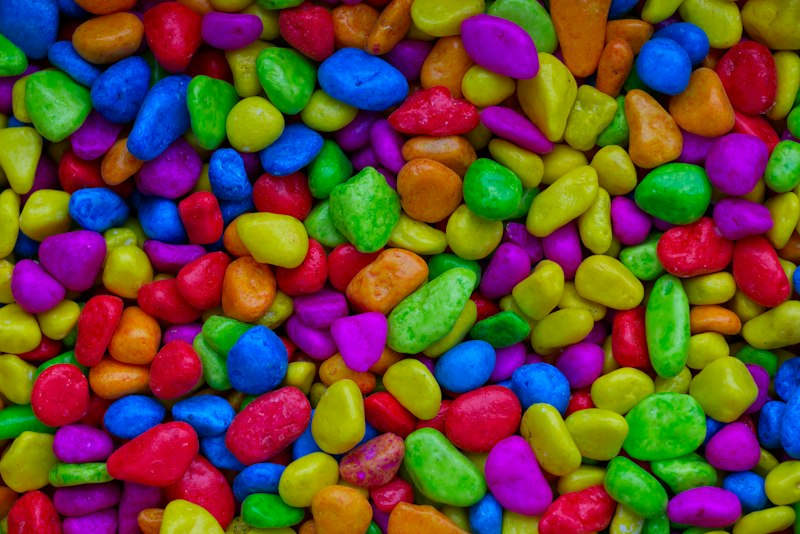Indigo, the mesmerizing and vibrant color that has captivated human imagination for centuries, is deeply rooted in history. But have you ever wondered which country gave birth to this enchanting hue? Let’s delve into the origins of indigo and uncover its fascinating journey.
To trace the roots of indigo, we must travel back in time to ancient civilizations. The discovery of indigo dye can be attributed to the people of India, a land of rich cultural heritage. India, with its fertile soil and favorable climate, provided the perfect conditions for the cultivation of indigo plants. The leaves of these plants were used to extract the precious blue pigment, which became highly sought after around the world.
Indigo’s popularity spread like wildfire, captivating the hearts of people far beyond India’s borders. It made its way to various corners of the globe through trade routes and explorations. The color found its place in the lives of many cultures, becoming synonymous with beauty, spirituality, and creativity.
In Europe, indigo became a symbol of luxury and status. It was sought after by nobles and aristocrats who adorned themselves and their homes with fabrics dyed in this lavish hue. The demand for indigo led to the establishment of indigo plantations in countries like France and England, where it was cultivated on a large scale.

As time went on, indigo’s influence continued to spread. It became an integral part of the history and culture of numerous nations. From Japan’s traditional textile artistry to the batik designs of Indonesia, indigo made its mark in diverse artistic expressions around the world.
Today, indigo continues to adorn our lives in various forms. From fashion and interior design to art and crafts, its timeless allure endures. Whether it’s a pair of jeans or a stunning piece of artwork, the color indigo continues to invoke a sense of wonder and fascination.
So, the next time you come across the captivating shade of indigo, remember its origins and the country that gifted us this extraordinary hue — India. Let the rich history and cultural significance of indigo deepen your appreciation for this mesmerizing color that has transcended borders and captured the hearts of people across the globe.
Unlocking the Mysteries: Revealing the Secret Origins of Indigo Dye
Have you ever wondered about the mesmerizing blue hue that has enchanted civilizations for centuries? Indigo dye, with its deep and vibrant shades, has a rich history that spans continents and cultures. In this article, we will delve into the secret origins of indigo dye and unveil the captivating journey it has taken throughout time.
Indigo dye derives its name from the plant Indigofera tinctoria, a species known for its intense blue pigment. The earliest traces of indigo dye can be traced back to ancient civilizations in the Indus Valley, where evidence of its use dates as far back as 2500 BCE. From there, the knowledge of indigo dye gradually spread across Asia, reaching countries like China, Japan, and India.
In India, the art of indigo dyeing developed into a highly sophisticated craft. Artisans carefully extracted the blue dye from the leaves of the indigo plant through a meticulous fermentation process. This process involved soaking the leaves in water and allowing them to ferment, resulting in the transformation of the colorless liquid into a vivid blue dye. The richness and depth of Indian indigo made it highly prized and sought after in international trade.
As maritime exploration expanded during the Age of Discovery, European traders encountered indigo dye in their interactions with Asian cultures. The demand for this mysterious blue dye skyrocketed, prompting Europeans to search for ways to cultivate and produce indigo on their own soil. It was not until the discovery of the American continent that they found success.
In the New World, specifically in the Caribbean and later in the southern regions of the United States, European colonizers discovered a native plant called Indigofera suffruticosa. This plant possessed similar properties to its Asian counterpart and became the primary source of indigo dye production for the European market. Plantations were established, and the labor-intensive process of extracting and processing indigo dye began.
The secret origins of indigo dye continue to fascinate historians and researchers alike. Unraveling its mysteries has shed light on the interconnectedness of cultures throughout history. Today, indigo dye remains a symbol of craftsmanship and artistry, with artisans around the world maintaining traditional dyeing techniques while incorporating modern innovations.
Indigo dye’s secrets have unfolded across time and continents, leaving an indelible mark on the fabric of human civilization. From its ancient roots in the Indus Valley to the plantations of the New World, indigo dye continues to captivate us with its enduring beauty and intrigue.
Traveling Back in Time: Tracing the Rich History of Indigo’s Country of Origin
Have you ever wondered about the origins of indigo, that enchanting blue dye that has left its mark on history? Travel with me back in time as we unravel the captivating story of indigo’s country of origin.
Picture yourself in ancient India, where this tale begins. The vibrant land known for its spices and textiles holds a secret within its soil: the indigofera tinctoria plant. This unassuming shrub, with its delicate pink flowers, holds the key to creating a color that would later capture the imagination of civilizations across the globe.
Indigo production was a meticulous process requiring expertise and patience. Skilled artisans would carefully harvest the indigo leaves, then ferment and dry them to extract the precious blue pigment. The result was a deep, mesmerizing hue that quickly became synonymous with luxury and status.
As trade routes expanded, indigo found its way to various corners of the world. From ancient Egypt to the Roman Empire, its allure spread like wildfire. Indigo-dyed fabrics adorned the noble classes, gracing their garments with an air of elegance.
Fast forward to the Middle Ages, where indigo became a symbol of power in Europe. Merchants vied for access to this coveted dye, fueling exploration and ventures into distant lands. The quest for indigo even played a role in shaping the course of history, as it became intertwined with colonialism and the rise of empires.
But what makes indigo’s country of origin truly remarkable is not just its historical significance, but also its cultural legacy. Across the regions where indigo thrived, distinct dyeing techniques emerged, each with its own unique charm. From Japan’s mesmerizing shibori patterns to West Africa’s intricate adire cloth, indigo became a language of creativity and self-expression.
Today, as we marvel at the indigo-dyed wonders of the past, we can’t help but be inspired by the artistry and ingenuity that went into creating them. Indigo’s journey through time reminds us of the human desire for beauty and the quest to leave a mark on the world.
So, let’s celebrate indigo’s country of origin, India, and its rich history. Let’s honor the artisans who transformed this humble plant into a color that still captivates us today. And as we travel back in time through the annals of history, let’s remember that indigo is more than just a dye—it’s a testament to the enduring power of human creativity.
Indigo Unveiled: Delving Into the Cultural Significance of its Birthplace
Have you ever wondered about the origins of indigo, that mesmerizing blue hue that has captivated artists and fashion enthusiasts for centuries? Indigo dye holds a rich cultural history, and understanding its birthplace can shed light on its significance in various cultures around the world.

Indigo, derived from the plant Indigofera tinctoria, has been used as a natural dye for thousands of years. Its roots can be traced back to ancient civilizations in India, where it was cultivated and processed into dye. The indigofera plant thrived in the fertile soil and favorable climate of the Indian subcontinent, making it an ideal location for its cultivation.
In India, indigo dye held immense cultural and socioeconomic importance. It was often referred to as “blue gold” due to its high value and demand. The production and trade of indigo became a significant industry, shaping the economy and social structure of the region. This valuable dye was used to color textiles, creating vibrant fabrics that were highly sought after both locally and in international trade.
Beyond India, indigo’s allure spread to different parts of the world, including East Asia, Africa, and Europe. The dye traveled along extensive trading routes, influencing art, fashion, and cultural practices wherever it went. From Japanese indigo-dyed kimonos to West African indigo-dyed textiles, each culture infused their unique aesthetics and techniques into their use of indigo.
The cultural significance of indigo goes beyond its beautiful hue. In many societies, indigo was associated with spirituality, symbolizing wisdom, intuition, and divine knowledge. It was also linked to rituals and traditions, playing a role in ceremonies and celebrations across various cultures.
Today, indigo continues to inspire contemporary artists, designers, and enthusiasts. Its timeless appeal is evident in the fashion industry, where indigo-dyed denim remains a classic choice. Artists explore indigo’s versatility, incorporating it into paintings, sculptures, and mixed media creations.
Delving into the cultural significance of indigo’s birthplace allows us to appreciate its enduring legacy and the impact it has had on diverse cultures worldwide. From its humble origins in India to its global reach, indigo dye serves as a testament to the power of natural materials to shape human history and connect communities across time and space.
So, the next time you see that rich, deep shade of blue, take a moment to contemplate the journey it has traveled and the stories it carries within. Indigo is more than just a color; it is a vibrant tapestry woven with threads of culture, tradition, and artistic expression.
From Ancient Traditions to Global Influence: Exposing the Birth Country of Indigo
Introduction:
Have you ever wondered about the fascinating origins of indigo, one of the world’s oldest and most captivating natural dyes? Join us on a journey through time as we unravel the secrets of this enchanting hue and discover its birth country.
Indigo’s Ancient Beginnings:
Step back in time to ancient civilizations, and you’ll find that indigo has been cherished for millennia. Its history can be traced back to the banks of the mighty Indus River, in what is now Pakistan and India. The people of the Indus Valley Civilization were among the first to cultivate indigo plants and master the art of extracting the rich blue dye from their leaves.
Indian Indigo’s Cultural Significance:
As our voyage continues, we find ourselves in the vibrant tapestry of India, where indigo holds deep cultural significance. Known as “neel” in Hindi, indigo has been used to create exquisite textiles such as sarees and turbans. Indian artisans perfected the intricate process of dyeing fabric with indigo, showcasing their mastery in creating magnificent designs that have captured the imagination of people worldwide.
The Indigo Trade Route:
Embark on an imaginary voyage along the ancient trade routes, and you’ll witness the extensive influence of indigo across continents. Traders traveled from the Indian subcontinent to the Middle East, North Africa, and eventually Europe, introducing indigo to new cultures and weaving it into their traditions.
Europe’s Fascination with Indigo:
Arriving in Europe, indigo enchanted artists, painters, and fashionistas alike. Its intense color became synonymous with luxury and prestige. The Dutch, in particular, played a significant role in the global indigo trade during the 17th century, establishing plantations in their colonies and cultivating indigo for export across the world.
Conclusion:
From its humble beginnings in the Indus Valley to its global influence, indigo has left an indelible mark on the fabric of human history. This captivating hue continues to inspire artists, designers, and fashion enthusiasts worldwide. So, next time you admire a beautifully dyed fabric or lose yourself in the mesmerizing depths of a painting, remember that behind it lies the rich heritage and remarkable journey of indigo—the color that transcends borders and time itself.